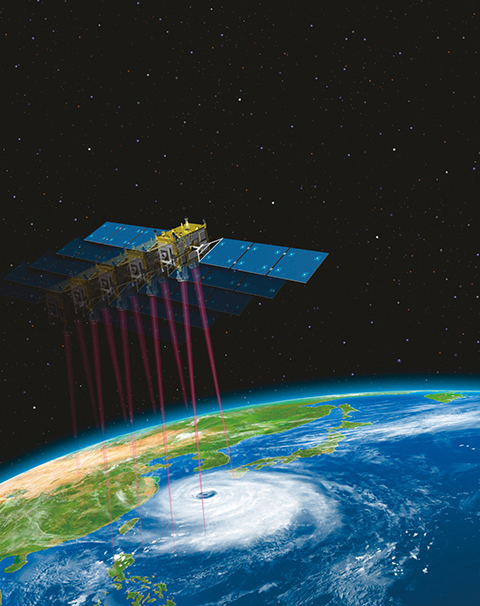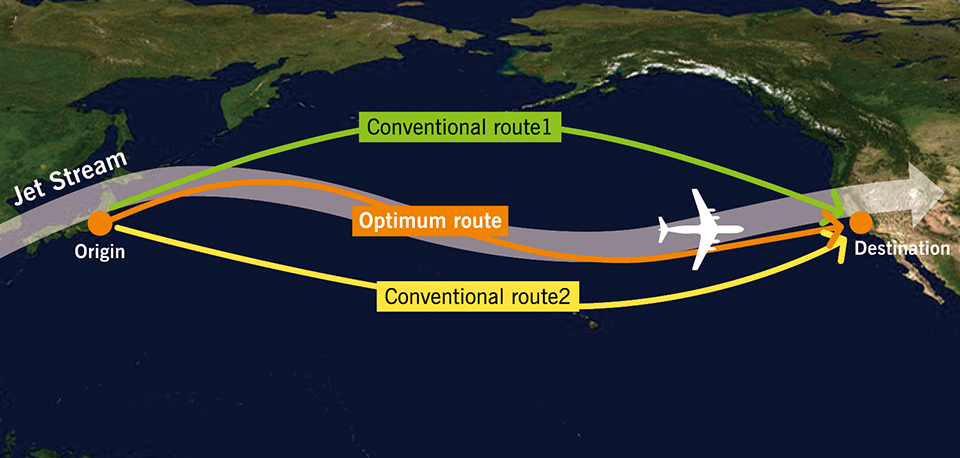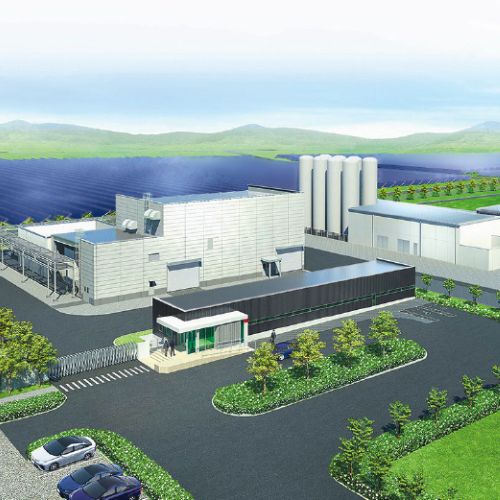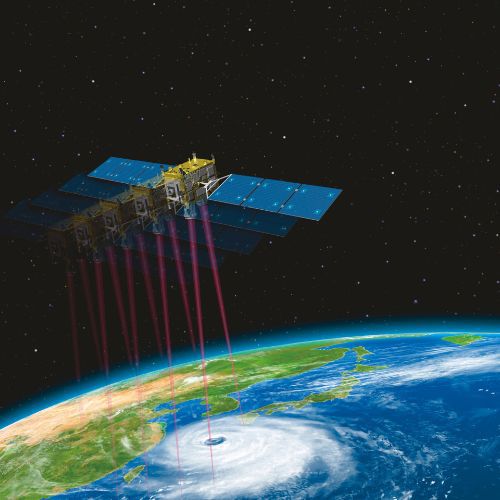Spurred by an idea from Ayako Matsumoto, an employee at ANA HOLDINGS INC., a collaborative research project between Japanese research institutes and that company is now developing a satellite system for the accurate observation of wind direction and speed. Expectations are growing that the system will help reduce CO2 emissions from aircraft and combat climate change.

This figure shows Space-based Doppler Wind Lidar in action. The system is also expected to raise the accuracy of weather forecasts for typhoon paths, torrential rain, and more.
By using satellites to measure wind and then optimize aircraft flight routes, the project will reduce CO2 emissions to mitigate climate change. Holding the key to this effort is the Space-based Doppler Wind Lidar (DWL), a technology for which R&D is being conducted by the Meteorological Research Institute, the National Institute of Information and Communications Technology (NICT) and the Japan Aerospace Exploration Agency (JAXA).

The project team consisting of members from the Meteorological Research Institute, NICT, JAXA and ANA. Ayako Matsumoto of ANA is in the middle.
This research caught the attention of Ayako Matsumoto at ANA HOLDINGS INC., the parent company of ALL NIPPON AIRWAYS, as she wondered about potential applications with aircraft. The amount of aviation fuel that is carried depends on an aircraft’s flight route, which is calculated according to wind readings and other meteorological data. Noting that wind can affect how much fuel is consumed, Matsumoto, whose experience has been in flight-support operations, mused whether the wind distribution data derived from Space-based DWL could enable better routes with more accurate predictions, and if it could help save fuel. Those ponderings led Matsumoto to present her ideas at a business contest. Her proposal made research institutes realize the great potential for industrial applications with Space-based DWL, as they had previously focused their research only on meteorological observations. Matsumoto and Keio University estimate that if the world’s airlines operated their aircraft using data from Space-based DWL, they could cut annual fuel consumption by 1.5% and CO2 emissions by 0.2% from 2018 levels.

An accurate understanding of wind movement with Space-based Doppler Wind Lidar would lead to aircraft flying optimized routes, minimizing fuel amounts, and lowering CO2 emissions.

The collaboration between research institutes and airlines may enable future applications of Space-based Doppler Wind Lidar.
The benefits that Space-based DWL would bring to our planet do not stop at curbing CO2 emissions. As Kozo Okamoto from the Meteorological Research Institute explains, based on numerical weather prediction models, Space-based DWL observations “would give us information on wind, air temperature, water vapor, and so on, which would allow more accurate predictions of typhoon paths and torrential rainfall.” Shoken Ishii of the NICT sees promise in the system, because in addition to mitigating damage from natural disasters, he says the accumulated data would assist with medium- to long-term climate change predictions, which would then “lead to solutions for food crises and poverty.”
Space-based DWL is fostering hopes that it can also contribute to achieving the Sustainable Development Goals (SDGs) for combating climate change and climate-related disasters. According to Daisuke Sakaizawa of the JAXA, expanded collaboration with relevant institutions in the United States and Europe is also currently under consideration. With industry, academia and the government moving R&D forward, we can look ahead to the day when Space-based DWL can make a major contribution to addressing issues affecting the Earth's environment.





























